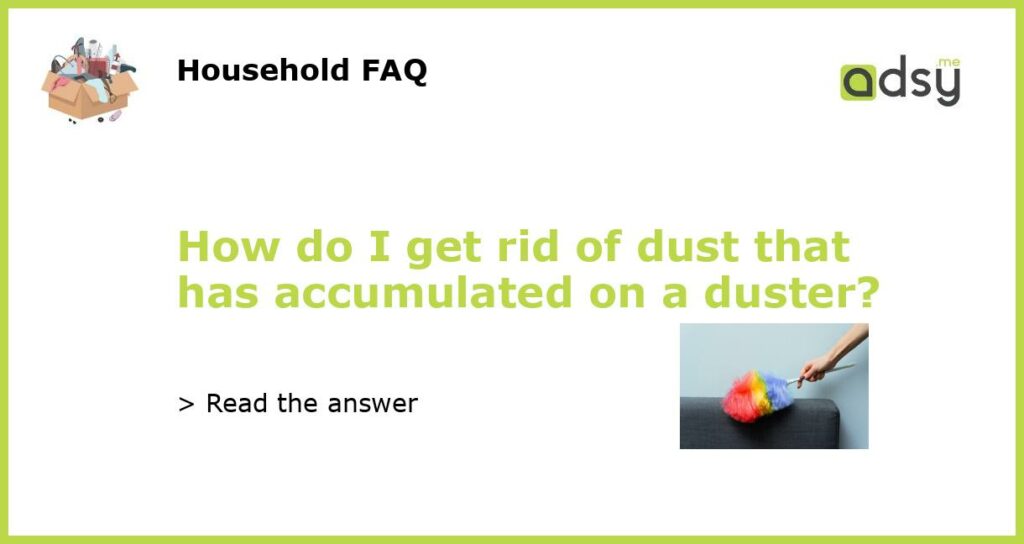Understanding the impact of dust on dusters
Dust is an inevitable part of our daily lives. It accumulates on every surface, including our dusters. Over time, the dust that has collected on your duster can become thick and heavy, potentially reducing its effectiveness. It’s essential to know how to properly clean your duster and get rid of all the dust that has accumulated. There are measures you can take to extend the lifespan of your duster, improve your indoor air quality, and prevent allergies or respiratory issues.
The proper way to clean a duster
Cleaning a duster might seem straightforward, but not following the proper procedure can damage it or reduce its efficacy. The first step is to remove as much dust as possible from the duster by shaking it outside. You can then use a brush (or your hand) to remove any remaining dust. At this point, check to see if your duster is machine-washable. If it is, wash your duster in warm water with a mild detergent. Be sure to rinse it thoroughly and air dry it outside of direct sunlight. If your duster is not machine-washable, soak it for a few minutes in a solution of warm water and dish soap, rinse it thoroughly, then air dry it in the same manner.
Alternatives ways to clean a duster
If the previous method is not efficient, you can use other alternatives to clean your duster. One option is to use a can of compressed air, which can remove dust from all the tight corners and hard-to-reach areas. Another option is to use a vacuum cleaner with a soft brush attachment to remove the dust. You can also mix equal parts of water and vinegar in a spray bottle and dampen the duster with it. The vinegar will absorb the dust and eliminate any odors.
Maintaining a clean, dust-free environment
Whether you clean your duster after every use or once a week, it’s essential to maintain a clean, dust-free environment. Here are a few tips to help you achieve that:
- Vacuum high traffic areas in your home daily or weekly, depending on the number of people and pets that live with you.
- Use air purifiers, particularly in areas of your home where there is increased dust accumulation, like near windows or doors.
- Replace air filters regularly to ensure that your HVAC system is not circulating dust in your home.
- Mop your floors regularly, as dust gets trapped in carpets and contributes to poor air quality.
Dust can be a nuisance, but it’s essential to keep your indoor environment clean for your health and well-being. Cleaning your duster regularly and maintaining a dust-free environment can reduce allergies, respiratory issues, and improve your indoor air quality. Now that you know how to clean your duster correctly and various alternatives, you can keep it clean and extend its lifespan.






